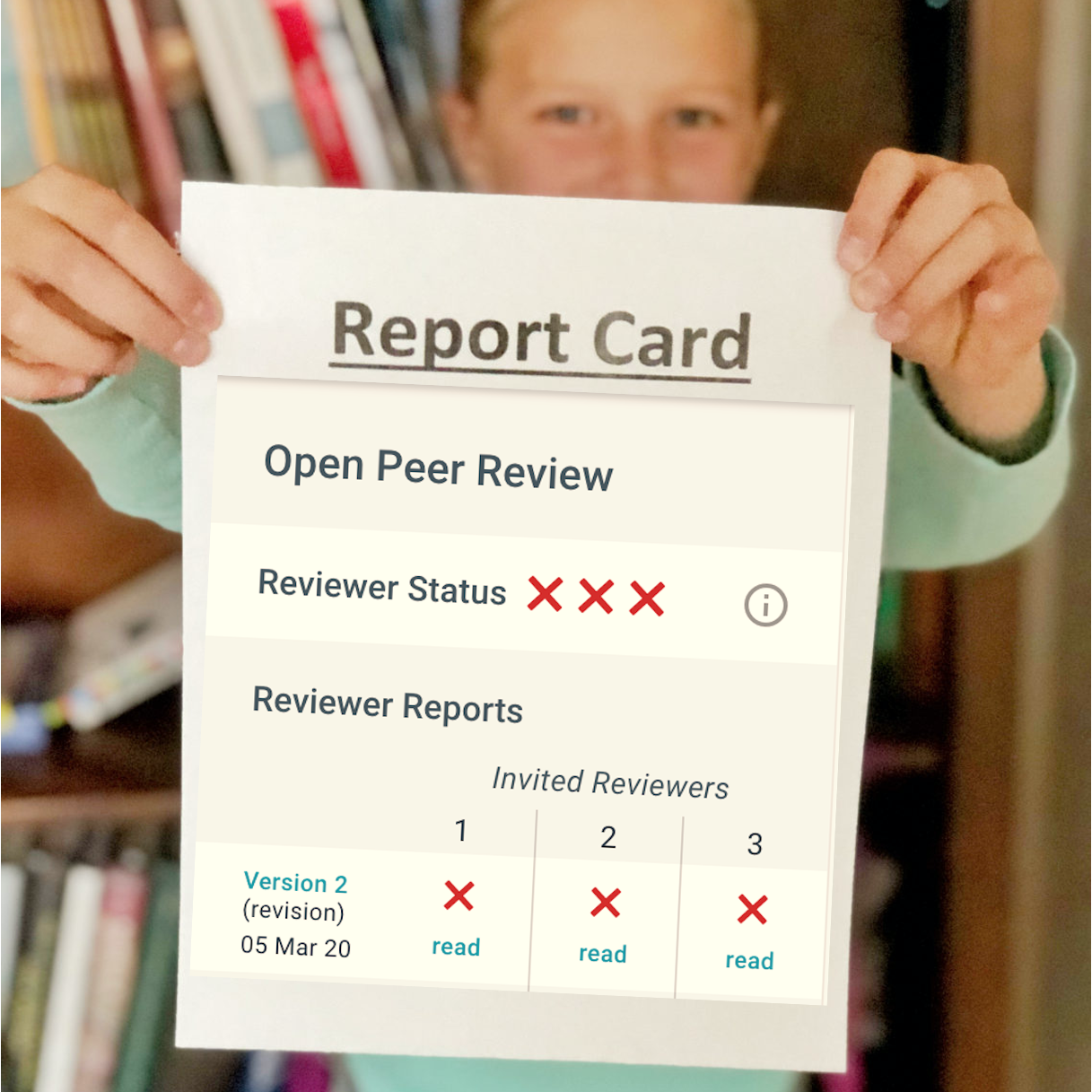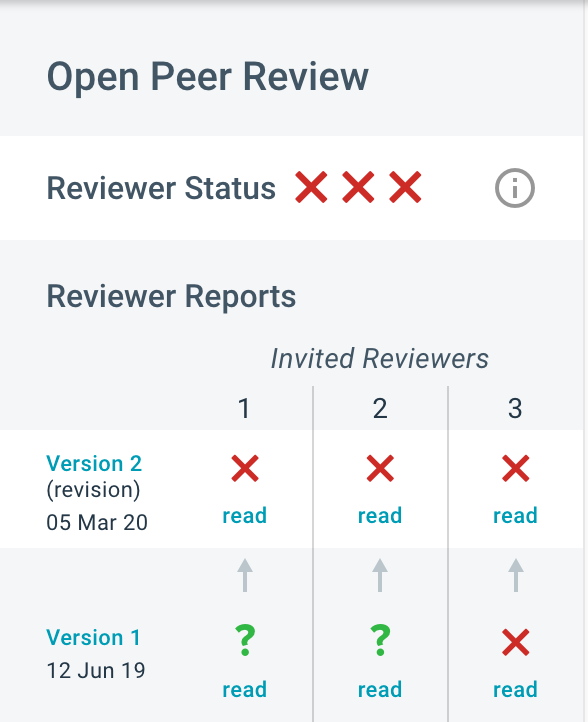It’s Good to Be a Reject
Citations, downloads, indexing — a scientific report gets all this, even if it's rejected
I’m supposed to be a scientific report. My research and publication were funded by Wellcome Trust. My authors wrote me up and submitted me. It was looking good.
And, well, I’ve been rejected.
My name is “Patterns of neurobehavioral functioning in school-aged survivors of neonatal jaundice and hypoxic-ischemic encephalopathy in Kilifi, Kenya: A cross-sectional study” — and this is my story.
You may think it’s going to be a sad story. It’s not. It’s actually a surprisingly happy story. And while I tell it, I’ll also tell you stories of some other happy rejects I know.
I’m not alone. Not by a country mile.
When this all started, I didn’t think it would come to this. My authors got the funding, did the work, and wrote up the results. They even submitted me to a platform run by one of their employers, and suggested the reviewers to be used.
Maybe they misjudged.
Now, I’ve been rejected. I’ve been advised to embrace the label, lean into it. After all, you can see it. I was rejected publicly, out in the open, in a system even called “open.”
Yet, I don’t care.
And that’s where the story gets interesting.

You see, with this kind of open review on the Internet, you’re not really rejected in the sense of not being available, or even clearly marked as such. It’s kind of a joke, in fact. You’re published before you’re reviewed. Even after getting bad reviews, many people who see me don’t know I’ve been rejected. They don’t see that, at first, reviewers were uncertain, and then when I was revised, they became certain they needed to reject me.
Don’t believe me? Here’s the proof:

It turns out the reviewers were concerned that my authors never addressed some key issues or included some key data necessary to support their hypothesis. I think that made them suspicious that the data don’t exist, or are being suppressed for some reason. Maybe, maybe not. I’m just a vessel. It seems weird that my revision took as long as a human pregnancy. I guess with this system, there’s no need for authors to hurry. I had a DOI from Day 1, and was in big search engines and indexes, too.
With all that on my side, what’s the rush?
Even though my authors couldn’t answer the core questions posed by the reviewers, I still got indexed on Europe PMC, where my rejected status isn’t even displayed. In fact, Europe PMC has a program called SciLite that extracts concepts from me, making me look even more legitimate than I might otherwise. They also show my versioning, but without any indication that I’m a reject. They call me a “preprint,” despite the open platform I use being ambivalent whether that’s what I am or not.
I’m also indexed in ResearchGate, where my status as a two-time reject has similarly been removed. I’m indexed on a site called Semantic Scholar, which also doesn’t show my rejected status. I’m archived in the Oxford University Research Archive, where I’m listed as a journal article “under review.”
It’s like my record’s been expunged.
My authors deposited the data — lacking, I guess, the data the reviewers wanted — in the Harvard Dataverse system, getting another DOI in the process.
I mean, this is great. Harvard. Oxford. Wellcome Trust. I’m being given cloud cover by all sorts of big brands here.
And I’m a reject!
Hilarious.
I’m not alone, either. There’s a group of us from Wellcome Open Research like this. We’ve been rejected by reviewers, but are still indexed in Europe PMC, ResearchGate, Semantic Scholar, and via some academic repositories — all of which fail to note our rejected statuses in their versions. And we get hundreds of views. One of us has more than 78,000 views.
Of course, we’re not the biggest group of rejects. You have to go to the big preprint servers for those. I mean, it’s mind-boggling what happens there. One preprint caused a national scare about cell phones and brain cancer after the research had been rejected up and down the journals system, and the urban legend it created continues to this day.
I mean, what’s up with that‽
And get this — a manager of the preprint server defended keeping the preprint up based on a “so the readers can judge” argument.
As if!
Somewhere north of 30% of the research outputs on these big preprint servers are rejects — old papers never published in a journal. But there they sit, with their DOIs, PDFs, and usage data, gathering views and showing up in searches like any other paper. Just some little disclaimer — like a shirt tag — sets them apart.
Who reads shirt tags when they’re in a hurry?
Dozens of us have found shelter as preprints under a top journal brand, with more sure to follow. Are we legit? It’s harder to tell in settings like this, which makes us feel less like rejects. We look so much like the kinds of papers editors and reviewers and statisticians have certified, it almost doesn’t matter that we flopped.
This whole system has such confusing guardrails now, we rejects just love it. It was never perfect, but what is? Now, it’s so confusing, almost anything can become discoverable, get amplified, and appear valid.
We’re everywhere!
We rejects even get cited. One reject from 2016 — not reviewed since, it’s just sitting there, like a lost shoe in the middle of a dirt road people sometime stumble across — has been cited five times. And it’s a reject.
There’s just no downside.
Even the idea of expert assessment — which can lead to rejection — is being called into question by people running these open systems. Look at this tweet from last week from an Open Science Project Manager at Wellcome Trust about an article here:

Now, I’m not going to pick on the “right/write” mistake. After all, the last thing we rejects want to do is harp on mistakes. But look at that — “not everything needs to pass peer-review.”
It’s music to these ears, I’ll tell you that!
Then . . . then . . . sorry, I have to catch my wind, this is all just leaving me a little breathless. Then, a person from the Gates Foundation — you see, Gates Open Research uses the same F1000 Research techniques at Wellcome Open Research — well, this Gates person jumps in, seemingly out of nowhere, and uses the same argument the preprint manager used — “let the readers decide”:

She says it’s not a preprint server, but Europe PMC calls the rejected papers “preprints,” and Wellcome people shade in the same direction. Even better, despite more than 90% of Wellcome-funded researchers clearly preferring journals that indulge in what she calls “editorial hand holding,” she still defends unpopular products with the “so readers can decide quality for themselves.”
That’s great. We rejects are all for circumventing experts.
Red flags about us — generated with good faith by some careful reviewers — are hard to find or missing completely in a lot of the venues where we appear. We have an automatic place in Europe PMC and ResearchGate and Semantic Scholar, it seems. We look bigger and more legitimate than we are, right off the bat. Rejection doesn’t limit our reach.
“Let the readers decide.” Sure! We’ll fool plenty of them, with the help of all these “scholarly” outlets.
OK, OK, I’m done. But you can see why we rejects are really happy with the systems you’ve been building. We’re thriving, and the processes that produced us are being defended by people with a lot of money and power. And nobody seems willing or able to do anything about it.
These days, it sure is good to be a reject.